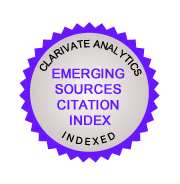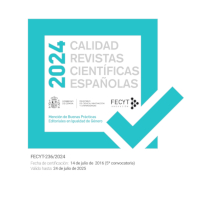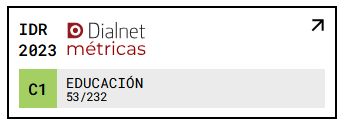De mitos, leyendas y cuentos : Necesidad didáctica del género narrativo
DOI:
https://doi.org/10.18172/con.495Abstract
The aim of this work here presented is to defend the recovery of the narrative gender work inside the educational institutions. Through its different modalities, myths, legends or tales, we want to express that it is possible understand a teaching model that includes this literary modality with the final objective of recover the imagination and the fantasy of people. Furthermore, we want to provide some patterns of performance inside of a teaching of the Language and the Literature philosophy that should help to get the social and educative changing that we wish.Downloads
References
BEAUFORT, A. (1999). Writing in the real world. Making the transition from school to work. Londres: Teachers College Press.
CERVERA, J. (1991). Teoría de la Literatura Infantil. Bilbao: Mensajero.
CLEMENT, M. (2001). Enseñar a leer. Madrid: Pirámide.
COLOMER, T. (1999). Introducción a la Literatura Infantil y Juvenil. Madrid: Síntesís.
CONESA, M. A. (2000). Crecer con los cuentos. Bilbao: Mensajero.
EGAN, K. (1994). Fantasía e imaginación: su poder en la enseñanza. Madrid: Morata/M.E.C.
ELIADE, M. (1973). Mito y realidad. Madrid: Guadarrama.
ENCABO, E. (2000). La inclusión como referente antinómico de la discriminación: la lectura es para todas las personas. En AA.VV. Lectura y valores II. Badajoz: Servicio de Publicaciones de la Universidad de Extremadura, 56-60.
HELLER, M. F. (1999). Reading-writing connections. From theory to practice. Londres: Lawrence Erlbaum Associates.
JAKOBSON, R. (1984). Ensayos de lingüística general. Barcelona: Ariel.
LÓPEZ, A. (1995). Estrategias didácticas para la producción de textos. En B. Mantecón y F. Zaragoza (Eds.). La gramática y su didáctica. Málaga: Universidad de Málaga/SEDLL, 218-225.
LÓPEZ, A. y ENCABO, E. (2000a). Tiempos de neoliberalismo, tiempos de incomunicación: la exigencia de enseñar Lengua y Literatura desde un enfoque crítico y reflexivo. Revista Campo Abierto, 17, 63-77.
LÓPEZ, A. y ENCABO, E. (2000b). La función poética o cuando el lenguaje se hace creación. Literatura Infantil y Juvenil, 168, 19-24.
LÓPEZ, A. y ENCABO, E. (2000c). Repensando la competencia literaria: hacia una orientación axiológica. Puertas a la lectura, 9-10, 89-94.
LÓPEZ, A. y ENCABO, E. (2000d). El taller de creación literaria como iniciación a la Literatura Infantil y Juvenil. En A. Suárez y E. Martos (Coords.). Identidad cultural del niño, tradiciones y Literatura Infantil. Badajoz: Servicio de Publicaciones de la Diputación Provincial, 103-111.
LÓPEZ, A. y ENCABO, E. (2001a). El aula feliz. Heurística de la comunicación. Barcelona: Octaedro.
LÓPEZ, A. y ENCABO, E. (2001b). Cómo favorecer la comunicación en la niñez y la adolescencia. Madrid: Pirámide.
MARTOS, E. (1988). La poética del patetismo. Mérida: Editora Regional de Extremadura.
MAY, R. (1998). La necesidad del mito. La influencia de los modelos culturales en el mundo contemporáneo. Barcelona: Paidós.
MENDOZA, A., LÓPEZ, A. y MARTOS, E. (1996). Didáctica de la Lengua para la enseñanza primaria y secundaria. Madrid: Akal.
MOORMANN, E. M. y UITTERHOEVE, W. (1997). De Acteón a Zeus. Madrid: Akal.
NOBILE, A. (1992). Literatura Infantil y Juvenil. Madrid: Morata/M.E.C.
OBIOLS, N. (1998). Cómo desarrollar los valores a partir de la Literatura. Barcelona: Ceac.
PARKIN, R. (1998). Antropología simbólica. En C. Lisón (Ed.). Antropología: horizontes teóricos. Granada: Comares, 121-148.
PROPP, V. (1977). Morfología del cuento. Caracas: Fundamentos.
RAINES, S. e ISBELL, R. (2000). Cómo contar cuentos a los niños: relatos y actividades para estimular la creatividad e inculcar valores éticos. Barcelona: Oniro.
ROWSHAN, A. (1999). Cómo contar cuentos: un método para ayudar al niño a crecer y a resolver sus problemas más habituales. Barcelona: RBA libros.
RODARI, G. (1991). Gramática de la fantasía. Introducción al arte de inventar historias. Barcelona: Aliorna.
SÁNCHEZ, L. (1995a). Literatura Infantil y lenguaje literario. Barcelona: Paidós.
SÁNCHEZ, L. (1995b). El cuento infantil: desde la antropología a la Literatura. En P. Guerrero y A. López (Eds.). Aspectos de Didáctica de la Lengua y la Literatura. Murcia: Servicio de Publicaciones de la Universidad, 793-799.
SOTOMAYOR, Mª. Vª. (2000). Lenguaje literario, géneros y literatura infantil. En P. Cerrillo y J. García (Coords.). Presente y futuro de la Literatura Infantil. Cuenca: Servicio de Publicaciones de la Universidad de Castilla-La Mancha, 27-65.
TEJERO, E. (1997). El retorno de los mitos. Mitología. Literatura. Transferencia didáctica. Didáctica (Lengua y Literatura), 9, 279-310.
TODOROV, T. (1988). El origen de los géneros. En M. A. Garrido (Comp.). Teoría de los géneros literarios. Madrid: Arco libros, 31-48.
TRIGO, J. M. y otros (1997). El niño de hoy ante el cuento. Sevilla: Guadalmena.
VAN GENNEP, A. (1982). La formación de las Leyendas. Barcelona: Alta Fulla.
ZARO, J. J. y SALABERRI, S. (1993). Contando cuentos. Edinburgh: Heinemann.
Downloads
Published
How to Cite
Issue
Section
License
The authors retain copyright of articles and authorize Contextos Educativos. Revista de Educación the first publication. They are free to share and redistribute the article without obtaining permission from the publisher as long as they give appropriate credit to the editor and the journal.
Self-archiving is allowed too. In fact, it is recommendable to deposit a PDF version of the paper in academic and/or institutional repositories.












